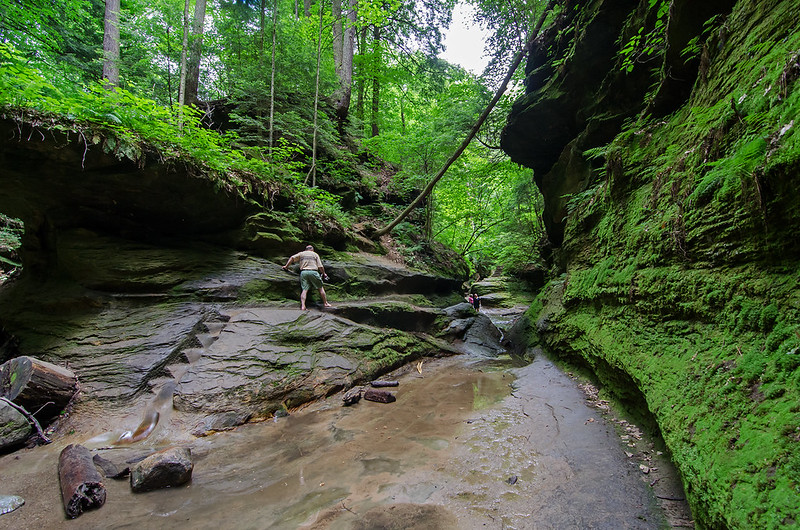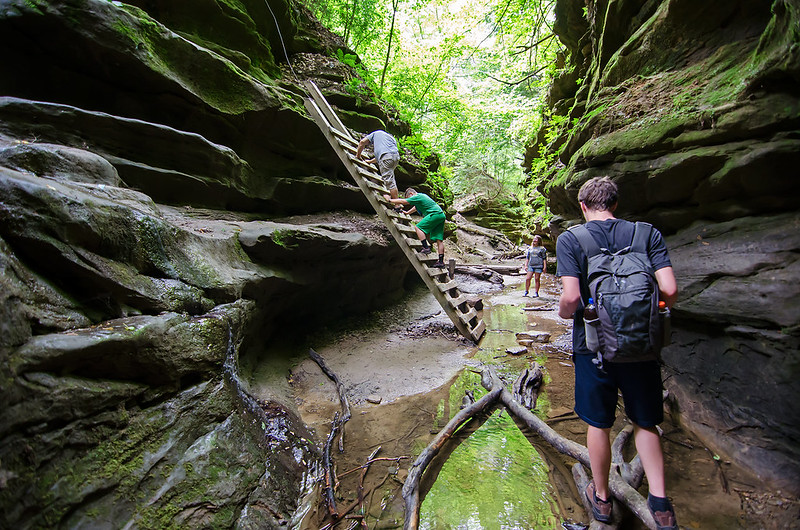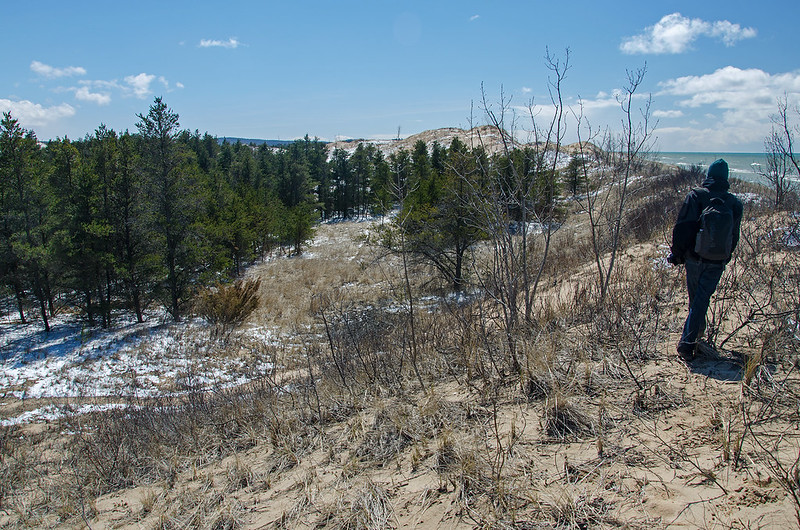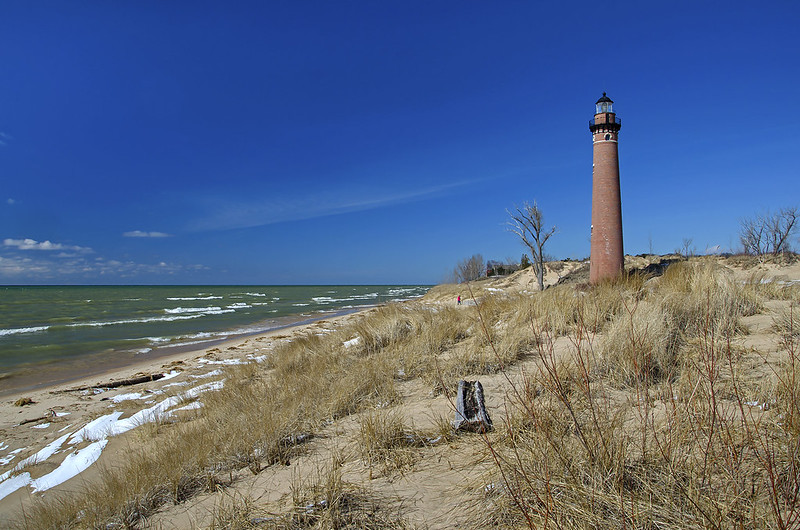
One of the appealing things about Turkey Run State Park is the opportunity to hike directly on the canyon floor where at times the stream is the only trail. In parts of trail 3, the canyon narrows to only four or five feet wide, and hikers walk directly in the stream. There is one way around, and it consists of some steps carved into the canyon wall.

At first these steps appear wide enough for a comfortable climb, but at the top, they narrow to the point where only one foot can fit onto a step. People with wide shoulders or large backpacks may find it difficult to walk in this area without turning their shoulders almost 90 degrees. While not too high up, a fall from this 10 foot high walkway would certainly cause injury. Some hikers choose to get their feet wet to avoid the potential danger.

The canyon changes from four feet wide to 30 as you hike along this portion of trail 3. Eventually, it opens up to an expansive area at the base of a gentle waterfall.
















































